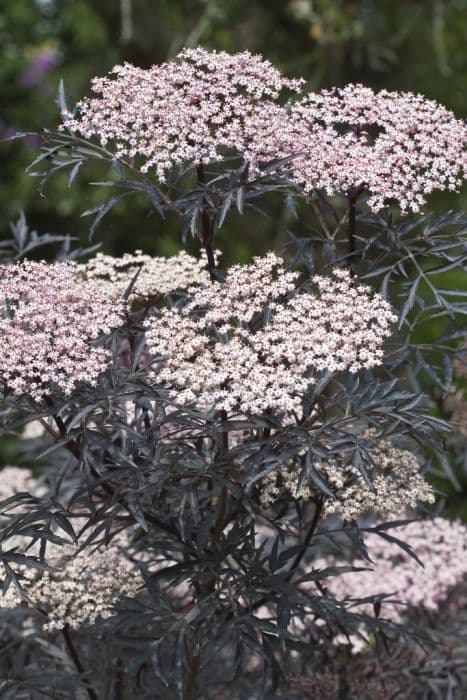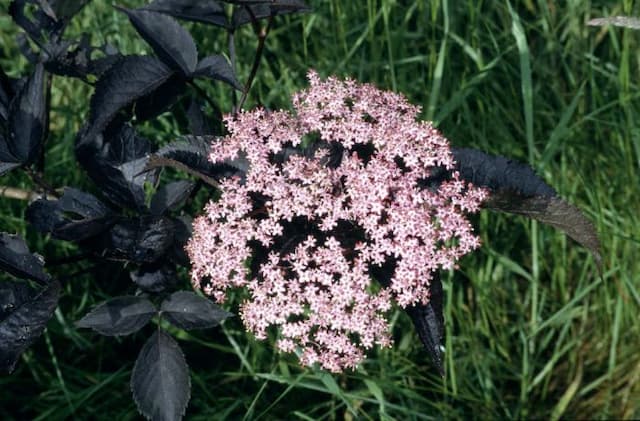Proso millet Panicum miliaceum



ABOUT
Millet is a type of cereal grain that typically grows to a height of 2 to 5 feet tall, depending on the specific variety and growing conditions. The stems are typically slender and upright, with long leaves that can reach up to 1 foot in length.
The seeds of millet are small and round, and vary in color depending on the variety, ranging from yellow to white to brown.
Millet is a widely cultivated crop that is grown throughout the world for food, feed, and other purposes.
About this plant
 Names
NamesFamily
Poaceae
Synonyms
Millet, Broom corn millet, Common millet, French millet, Hog millet, Russian millet, Indian millet, Kashfi millet, Red millet, White millet
Common names
Leptoloma miliacea, Milium esculentum, Milium panicum, Panicum asperrimum, Panicum asperrimum, Panicum densepilosum, Panicum milium, Panicum ruderale, Panicum spontaneum
 Toxicity
ToxicityTo humans
Millet is generally safe for human consumption and is a staple food in many cultures around the world. However, some individuals may be allergic to millet or may experience digestive discomfort if they consume large amounts of it.
Millet can also contain small amounts of goitrogens, which are substances that can interfere with thyroid function in susceptible individuals. Therefore, it is important for individuals with thyroid conditions to consult with their healthcare provider before consuming millet.To pets
Millet is commonly used as a feed grain for livestock and is generally considered safe for animal consumption. However, certain varieties of millet, particularly pearl millet, can contain high levels of nitrates, which can be toxic to ruminant animals such as cattle and sheep if consumed in large amounts.
Therefore, it is important for livestock producers to carefully monitor the nitrate content of millet and other forages to avoid potential health problems in their animals.
 Characteristics
CharacteristicsLife cycle
Annuals
Color of leaves
Green
Height
Up to 5 feet
Plant type
Herb
Hardiness zones
4
Native area
Asia
Benefits
 General Benefits
General BenefitsNutritious: Millet is a good source of fiber, protein, and essential minerals such as magnesium, phosphorus, and potassium.
Versatile: Millet can be used in a variety of dishes, including porridges, salads, and baked goods. It can also be popped like popcorn or ground into flour.
Gluten-free: Millet is naturally gluten-free and can be a good alternative to wheat, barley, and rye for individuals with celiac disease or gluten intolerance.
Sustainable: Millet is a hardy and drought-resistant crop that requires less water and fertilizer than other grains, making it a more sustainable crop choice.
Easy to digest: Millet is easy to digest and can be a good option for individuals with digestive issues.
Affordable: Millet is an affordable grain that is widely available in many parts of the world.
Long storage life: Millet can be stored for long periods of time without spoiling, making it a good option for food storage and emergency preparedness. Medical Properties
Medical PropertiesBlood sugar regulation: Millet is a low-glycemic index food, meaning that it does not cause a rapid spike in blood sugar levels. This makes it a potentially beneficial food for individuals with diabetes or insulin resistance.
Digestive health: Millet is a good source of fiber, which can help promote healthy digestion and prevent constipation.
Heart health: Millet is a good source of magnesium, which is important for maintaining a healthy heart rhythm and blood pressure.
Antioxidant properties: Millet contains antioxidants, such as phenolic acids, which can help protect against cellular damage caused by free radicals.
Anti-inflammatory properties: Some studies suggest that millet may have anti-inflammatory properties, which could help reduce inflammation in the body and prevent chronic diseases. Air-purifying Qualities
Air-purifying QualitiesThere is limited scientific research on the air purifying qualities of millet plants.
 Other Uses
Other UsesOrnamental use: Millet plants can be grown purely for their decorative value. The tall, slender stalks and feathery seed heads can add an interesting texture and visual interest to flower arrangements or home decor.
Bird feed: Millet seeds are a common ingredient in bird feed mixes, as they are small and easy for many types of birds to eat. Some bird enthusiasts also plant millet in their gardens specifically to attract birds.
Brewing: Millet has been used in the production of alcoholic beverages in some cultures, particularly in Africa and Asia. It can be fermented into beer, distilled into liquor, or used as a base for traditional fermented drinks like kvass.
Thatching: In some parts of the world, the stalks of millet plants are used as a thatching material for roofs. The dried stalks can be woven together to create a waterproof, natural roofing material that is sustainable and renewable.
Hay and animal feed: Millet can also be used as animal feed, particularly for livestock like cattle, sheep, and goats. The plants are often harvested and dried to create hay, which can be used as feed during the winter months when fresh pasture is not available.
Interesting Facts
 Feng Shui
Feng ShuiMillet is not commonly used in feng shui.
 Zodiac Sign Compitability
Zodiac Sign CompitabilityThere is no specific zodiac sign compatibility associated with millet.
 Plant Symbolism
Plant SymbolismIn many cultures, millet has a long history of use in religious or symbolic contexts. In some traditions, it is associated with fertility and abundance, and is used in rituals related to harvest or planting.
In other cultures, it is associated with purification or protection, and is used in amulets or talismans.
Overall, millet symbolizes growth, abundance, and sustenance.
 Water
WaterMillet generally prefers well-draining soil that is evenly moist but not waterlogged.
Watering once a week, or whenever the top inch of soil feels dry to the touch, is usually sufficient. Be careful not to overwater, as millet is susceptible to root rot. Light
LightMillet plants typically require full sun to thrive.
They can tolerate partial shade but may not grow as vigorously or produce as much seed. If grown indoors, place the plant in a bright location with plenty of direct sunlight. Temperature
TemperatureMillet is a warm-season crop that prefers temperatures between 70-90°F (21-32°C) for optimal growth. It can tolerate temperatures as low as 50°F (10°C) but may experience stunted growth or poor seed production at temperatures outside its preferred range.
In cooler climates, millet is often grown as an annual crop and planted after the last frost date in the spring. Pruning
PruningMillet plants generally do not require much pruning, but removing any dead or yellowing leaves can help keep the plant looking tidy and healthy. If grown for ornamental purposes, you can trim back the seed heads as they start to dry out to prevent them from shattering and to prolong the plant's lifespan.
 Soil
SoilMillet prefers well-drained, sandy or loamy soil with a pH between 6.0 and 7.5. The soil should be rich in organic matter and nutrients to support healthy growth.
Avoid heavy clay soils, as these can become waterlogged and stunt the growth of the plant. Repotting
RepottingThe plant is not grown at home, so transplanting is not necessary.
 Humidity & Misting
Humidity & MistingMillet prefers moderate to high humidity levels, ideally between 40% and 70%.
 Suitable locations
Suitable locationsIndoor
Growing only as microgreen of as cat grass
Outdoor
Cultivated almost all over the world as a crop.
Hardiness zone
5-10 USDA
 Life cycle
Life cycleGermination: Millet seeds are planted in spring, after the danger of frost has passed and soil temperatures have reached 60°F or above. Germination takes 7-14 days.
Vegetative stage: During the vegetative stage, the plant grows leaves, stems, and roots. This stage lasts for about 4-6 weeks after germination.
Reproductive stage: At around 45-60 days after planting, Millet starts to form its inflorescence, which is the part of the plant where the flowers and seeds are located. The inflorescence is a spike-like panicle that can range from 6 to 24 inches in length, depending on the variety.
Flowering: Millet flowers in mid-to-late summer, when temperatures are warm and days are long. The flowers are usually small and inconspicuous, with a greenish-white or yellowish color.
Seed development: After flowering, Millet seeds begin to develop and mature. The seeds are usually ready for harvest about 50-60 days after flowering, depending on the variety.
Harvest: Millet is typically harvested in late summer or early fall, when the seeds have ripened and turned golden-brown. The crop is usually harvested with a combine or by hand, and the seeds are then threshed and winnowed to remove the chaff and other debris. The harvested seeds can be used for a variety of purposes, including human consumption, animal feed, and as a cover crop. Propogation
PropogationPropogation time
Spring - early summer
Millet can be propagated by seeds, and the best time to plant millet seeds is in late spring or early summer when the soil temperature has warmed up to at least 60°F (15.5°C) and there is no longer a risk of frost. Millet seeds should be sown directly into the soil, as they do not transplant well.
The seeds should be planted about 1 inch (2.5 cm) deep and 3-4 inches (7.5-10 cm) apart in rows that are 2-3 feet (60-90 cm) apart. Millet seeds usually take about 5-10 days to germinate, and the plants will begin to grow quickly from there.
Millet can also be propagated by cuttings, although this is less common. The cuttings should be taken from healthy plants in the summer, and they should be about 4-6 inches (10-15 cm) long. The cuttings should be planted in a pot filled with moist soil, and they should be kept in a warm, humid environment until they root. This process usually takes about 2-3 weeks. Once the cuttings have rooted, they can be transplanted into the garden.
 Pests
PestsAphid, Armyworms, Cutworms
 Diseases
DiseasesRoot Rot, Ash rust, Smut









